Estimated reading time: 10 minutes
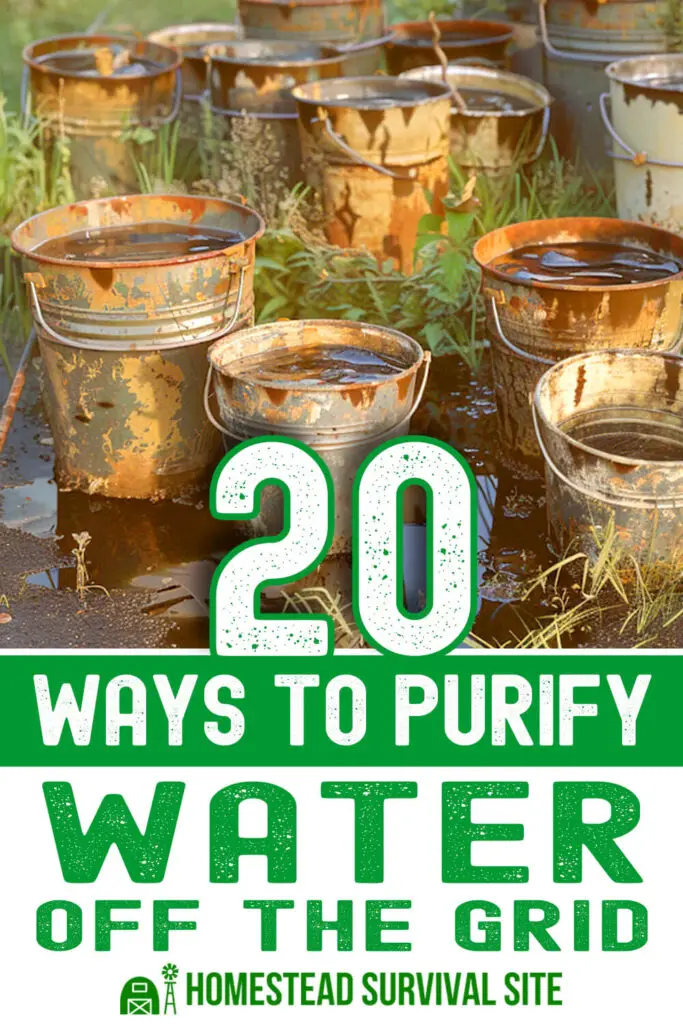
Just because the water looks clean doesn’t mean it’s safe to drink. According to the World Health Organization, millions of people die each year from contaminated water due to pathogens and bacteria.
If you’re living off the grid or homesteading, you may not have access to public drinking water, so you’ll need to purify yours to make sure it’s safe to drink. Here are 20 ways to purify water when you’re living off-grid.
Want to save this post for later? Click Here to Pin It On Pinterest!
Clean Water Basics
Water for drinking needs to be clean and safe, but so does water for brushing your teeth, cooking, washing food, or even making ice. There are a variety of ways to make water safe for drinking. The CDC has provided an infographic to give you a quick overview of water purification basics.
But in this article, we’ll take a look at different methods of making water safe to drink. Ultimately, you need to know your water source and what contaminants it might contain and then choose the correct method of purifying it. Here, then, are the best off-grid methods of water purification.
Boiling Water
One of the safest methods to kill viruses, bacteria, and parasites in your water is to boil it. You need to bring your water up to a full, rolling boil for at least one minute (higher elevations require 3 minutes). Of course, this water will be hot! So allow it to cool before use.
Keep in mind that boiling does not remove chemicals or particles, but it will kill microorganisms that can make you sick.
Disinfection
Another method of making water safe to drink is to disinfect it. Disinfectants kill most viruses and bacteria but might not kill some of the more resistant organisms. Disinfecting is usually done with household bleach, iodine, or water purification tablets.
Bleach
The EPA gives directions for disinfecting water with bleach. Disinfecting water with bleach is a simple process, but you do need to get the ratio of bleach to water right. Too much bleach can make you sick, but if you don’t use enough, you could still get sick from pathogens in the water.
You’ll need fresh liquid chlorine bleach that does not have fragrances, added cleansers, or buffers (such as color-safe bleach). Look for 6 or 8.25% sodium hypochlorite.
If your water is cloudy, you’ll need to filter it first. You can use a coffee filter for this.
Once you have your bleach and water ready, here's what to do:
- Use eight drops of 6% bleach or six drops of 8.25% bleach per gallon of water. If the water is cloudy, colored, or cold, you can double the amount of bleach.
- Stir the water and allow it to stand for 30 minutes. It should have a faint chlorine odor. If not, repeat the process and let it stand for 15 minutes.
- If the chlorine is too strong, you can pour the water into a clean container and allow it to stand for a few hours to let the taste dissipate.
Iodine
First aid kits often have iodine. You can use five drops of 2% tincture of iodine per quart or liter of water. If the water is cloudy, use ten drops. Stir the water and let it stand for 30 minutes. Iodine is not recommended for pregnant women or people with thyroid issues.
Water Purification Tablets
You can purchase water purification tablets online to disinfect your water. These are commonly found in bug-out bags, too. You’ll need to follow the manufacturer’s directions for use. Keep an eye on the shelf life, as many of these expire after one or two years.
Water Filtration
Water filters come in a variety of types and filtering possibilities. There are countertop filters, portable filters, and whole-house filters, depending on your needs and location.
You need to know which kind of filter you are using and ensure you have the right kind for your water supply. Always follow the manufacturer’s directions, so you don’t inadvertently contaminate your clean water.
For example, filters labeled NSF Standards 53 or 58 remove parasites but not bacteria and viruses. On the other hand, reverse osmosis filters remove salt from saltwater, bacteria, and viruses.
Important: Be careful not to confuse a water purification filter with a standard water filter. Water filters such as the ones designed by Brita will make your water taste better, but they are not intended to purify unsafe drinking water.
One of the challenges of water filtration systems is that you will need to replace the filters regularly. Remote locations and grid-down situations may make it difficult to get replacement filters, so you’ll want to have extras on hand and backup water filtration methods.
Berkey Water Filters
Many homesteaders rely on Big Berkey water filters to offer clean, safe drinking water. These systems are pretty expensive, but they are effective, removing 99.9% of all bacteria, viruses, microorganisms, and even pharmaceuticals.
Berkey filters rely on replaceable filters, but they might be hard to get off-grid.
Ceramic Water Filters
Ceramic filters are also pretty expensive, but they're usually even more effective than Berkey filters. They work by passing water through the microscopic pores of a ceramic filter element that traps harmful bacteria and other microorganisms.
The outer surface can be cleaned periodically to extend the filter's life. Many ceramic filters are enhanced with silver, which helps prevent microbial growth. These systems are available in various sizes, from portable units for individual use to larger countertop models for household use.
Homemade Water Filter
It's possible to build your own homemade water filter using simple materials like a plastic water bottle, cotton, sand, charcoal, and gravel. All you have to do is layer each element inside the bottle in the correct order.
Once it's done, you pour water into the top and wait for clean water to come out the bottom. While the water will taste good, you should know that this type of filter won't necessarily filter out all viruses and bacteria, so it's a good idea to boil it to be on the safe side.
You can learn how to build one of these with this tutorial.
Lifestraw Water Filters
Lifestraw makes a series of water filters designed to filter out different types of contaminants. For example, you can purchase single-person straw filters that filter out bacteria, parasites, microplastics, dirt, sand, and cloudiness, but not viruses. On the other hand, you can also purchase larger, gravity-fed filters that you can use on a homestead or camp.
If you are using a Lifestraw system on your homestead, you might want a larger system that can filter out more impurities, for more people, for a longer period of time. These systems are effective but also costly.
In addition, Lifestraw systems depend on filters to keep them safe. These filters have a limited number of gallons they can filter and a shelf life that could expire, so you’ll need to watch how much you use your life straw and its expiration date.
Reverse Osmosis
Reverse osmosis filtration uses a semi-permeable membrane to remove impurities from water under pressure. It can remove all sorts contaminants including bacteria, viruses, and chemicals.
The technology varies in scale from portable countertop systems for personal use to whole-house systems that provide clean water throughout the house. These systems can be pretty expensive, but you can trust that the water is clean and safe.
Distillation
Distillation is the process of boiling water to make steam. The steam is then condensed back into water for drinking. Distillation removes nearly all impurities from your water; however, the water may have a bland taste because the minerals have been removed.
Distillation is an expensive and time-consuming process and is best used for small quantities of water.
Instapot Water Distillation
You can distill your own water if you have a pressure cooker, such as an Instapot. You’ll put a gallon of water in the pressure cooker. You’ll need a food-grade, heat-safe tube to run from the steam valve to a clean collection container. Use the steam button and allow the Instapot to do its job.
You can find the detailed directions on Mother Earth News.
Pressure Cooker Water Distillation
If you live completely off-grid, you may not have enough electricity to run an Instapot. However, you can use an old-fashioned pressure canner to distill water. You can do this over a woodstove or camp stove, if necessary.
You’ll need a pressure cooker, copper tubing, and a clean collection container. Here's a youtube video on DIY pressure cooker water distillation.
Countertop Water Distillation
If you have access to electricity, such as solar power, you may want a countertop distillation pot. You can purchase these on amazon, like this one. However, these devices only distill small amounts of water and may not be enough for a family’s daily use.
Solar Still
You can make distilled water with a DIY solar still, which will harness the sun’s power and give you pure water. A solar still is a great choice for off-grid living because it does not require electricity. However, it may not work in cold or cloudy weather, so you’ll need a backup method, too.
Instructables.com has a detail tutorial on how to build one.
Bush Still
You can make a solar still with a hole in the ground and a plastic sheet, a collection cup, and moisture in a survival situation. Below you can see a video on creating this emergency water system here. This may not be the most effective method for daily use, but it will work in a pinch in hot weather.
Ultraviolet Light Purification
This is the process of using ultraviolet light to disinfect water. Although it is very effective, it may not work on cloudy water.
SteriPen
UV filters come in a variety of sizes and can be placed in your well, your home, or used on a small scale. One of the most popular is the SteriPen, which is great for purifying one bottle of water at a time.
Whole-house UV purification systems will require electricity to run. However, smaller, portable units for individual use can run on batteries.
GoSun
GoSun has created a portable, solar-powered water filter that does the work for you. It’s lightweight and can be carried in a backpack. Check it out here.
Solar Purification
If you can't afford those options, you can just use a 2-liter bottle. Fill it with clear water and shake it well to oxygenate. Place the bottle in direct sun, such as on a roof. Let it sit in the direct sun for 6 hours on a sunny day or two days if the weather is cloudy. This will improve the quality of the water but will not remove impurities such as chemicals.
If the water is cloudy, you may need to filter it before using solar purification.
Other Methods
BioSand Filters
A BioSand Filter is a water treatment system adapted from traditional slow sand filters. BioSand filters remove pathogens and suspended solids through a combination of biological and physical processes that take place in the biolayer and within the sand itself.
You can construct these filters using locally available materials. They require no electricity to operate, making them ideal for remote and rural settings. Regular maintenance is minimal, typically involving the occasional stirring of the top layer of sand. Here's a video showing how it's done:
Purifying Water with Wood
MIT studied sapwood and discovered it could filter out 99% of E. Coli. While more research needs to be done on the abilities of plants to filter water, it is a promising look into the future of water filtration. You can check out the idea here.
Rain Water Filter
If you are collecting rainwater for your animals, you can build a 4 step DIY water purifier to make sure their water is clean. This won’t give you purified water, but it will take out most particles. Here is the Big Family Homesteads water system.
If you need to, you could use this system in addition to a purifying system to give you water that is safe to drink.
Like this post? Don't Forget to Pin It On Pinterest!
You May Also Like:

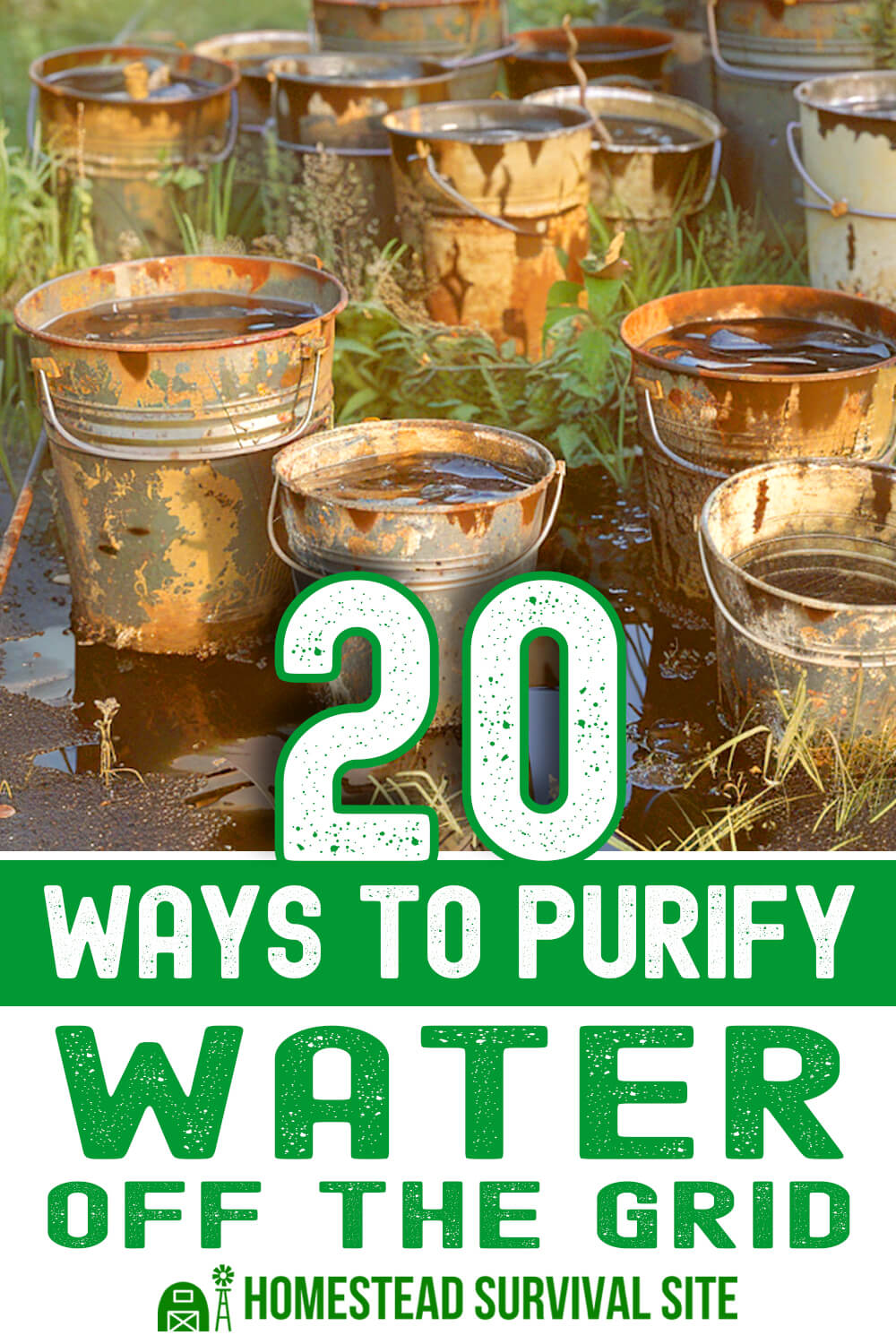



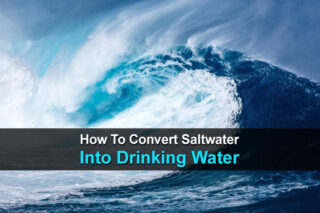


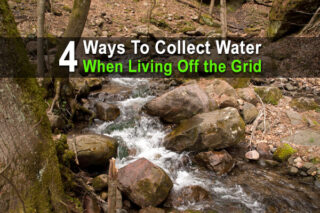
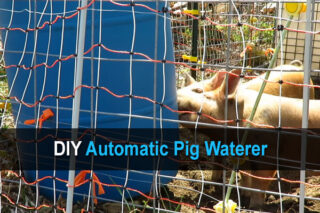



RE: Berkey filters- Berkey says to scrape off the sediment that accumulates on the filters. I feel a better way is to have a “sock” over the filter to catch the sediment before it gets to the filter.
Guess I should have finished reading before commenting. 😉
RE: Boiling water should be filtered for debris before drinking.